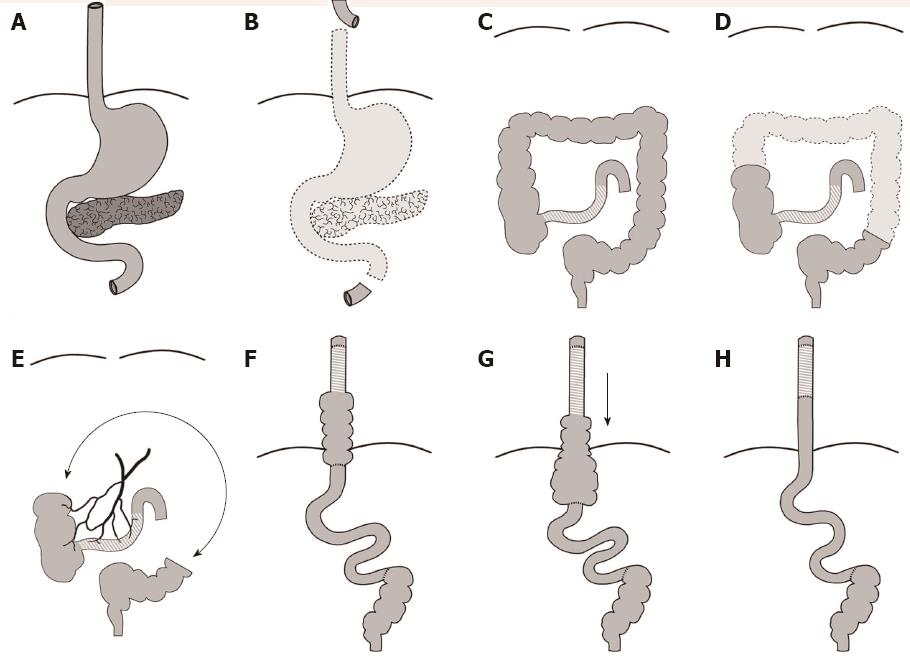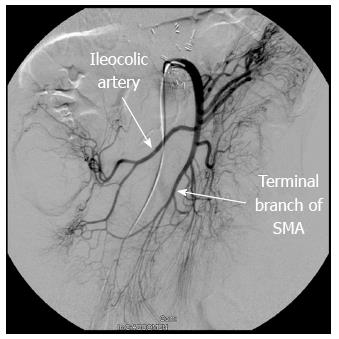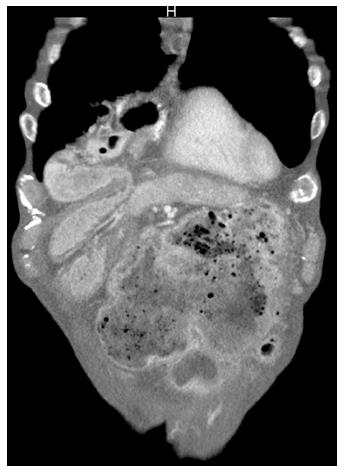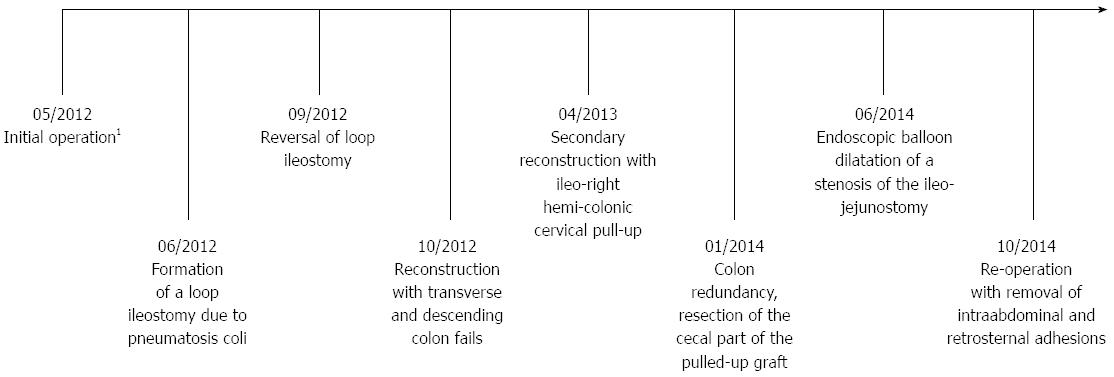Copyright
©The Author(s) 2016.
World J Gastroenterol. Apr 14, 2016; 22(14): 3869-3874
Published online Apr 14, 2016. doi: 10.3748/wjg.v22.i14.3869
Published online Apr 14, 2016. doi: 10.3748/wjg.v22.i14.3869
Figure 1 Secondary reconstruction with an ileo-right hemi-colonic cervical pull-up on a non-supercharged ileocolic arterial pedicle.
A, B: Before and after emergency esophagectomy, gastrectomy, duodenectomy and pancreatectomy due to a caustic injury with hydrochloric acid; C, D: Esophageal reconstruction with transverse and descending colon fails due to ischemic demarcation → consecutive resection of transverse and descending colon including the distal part of the ascending colon; E: A short stump of the right hemi-colon and approximately 40 cm of descending colon were left in situ, connected via a colo-colonic anastomosis; F: Esophageal reconstruction with an ileo-right hemi-colonic cervical pull-up on a non-supercharged ileocolic arterial pedicle in an isoperistaltic direction; G: Situation 9 mo after reconstruction: The cecal part of the pulled-up graft had moved downwards from the thoracic cavity into the abdomen and largely dilated, causing recurrent episodes of bowel obstruction; H: Final result: The ileocecal region was resected and an ileo-jejunostomy was formed.
Figure 2 Arteriographic examination of the superior mesenteric artery.
The ileocolic artery forms a tight loop with the terminal jejunal branch of the superior mesenteric artery.
Figure 3 Largely dilated cecum in the upper abdomen.
The cecal part of the interposition graft had moved downwards from the thoracic cavity into the abdomen with consecutive massive dilatation causing bowel obstruction.
Figure 4 Timeline.
1Initial operation: Indigestion of hydrochloric acid with consecutive esophagectomy, gastrectomy, duodenectomy, pancreatectomy and splenectomy. Creation of a cervical esophagostomy, a choledo-jejunostomy and placement of a jejunal catheter.
- Citation: Weiss AR, Hackl C, Soeder Y, Schlitt HJ, Dahlke MH. Ileo-right hemi-colonic cervical pull-up on a non-supercharged ileocolic arterial pedicle: A technical and case report. World J Gastroenterol 2016; 22(14): 3869-3874
- URL: https://www.wjgnet.com/1007-9327/full/v22/i14/3869.htm
- DOI: https://dx.doi.org/10.3748/wjg.v22.i14.3869












